I love Italy; I once worked for an Italian company and spent a lot of time in the country. This week I have the chance to spend a couple of days in Rome. As will all good trips I got a little time to play tourist. This is a city I’ll never grow tired of. But I found enough time to walk around, see a couple of old favourites and one new one I really wanted to visit.
Even just wandering along the road from the hotel to the subway is wonderful, there right in front of me is the Coliseum, but that’s not today’s destination. The Rome subway is not terribly convenient for most places, but it does run close to the hotel. It’s a little old, rather scruffy and only has two lines, but it does what I need today.
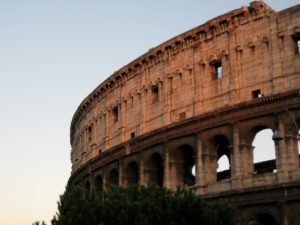
I get off at the Spanish steps, from there I a wander to the Trevi fountain and then onto the Parthenon. A just stunning building, it’s a few years since I’ve been there and the initial awe of walking through the three imposing rows of columns into the rotunda is still there.
It’s as inspiring as ever, not just the age, but the effort and labour that went into it. Looking up through the oculus in the centre to the blue sky knowing that people have been looking at exactly the same view for almost 1900 years is rather humbling.
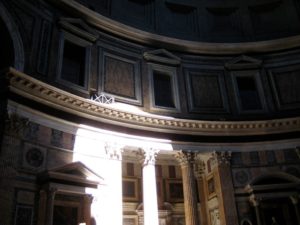
I don’t mean to sound like a gushing sycophant (but I am), but this is an amazing city full of wonderful buildings, stories, food, wine and people. I quickly run out of superlatives.
Michelangelo felt the Parthenon was the work of angels, not men. According to Roman legend, it is the location is where Romulus, the founder of Rome, died and was carried off to the heavens by an eagle to be with the gods.
The city has enough legends, stories and history to keep people busy for a lifetime.
My father visited it in 1952 as an 18 year old leaving Greenock, unfortunately he was not up to visiting this time. When I was in England last spring we talked about how it was when he visited. It was only 7 years after the end of the war and while Rome itself was not the scene of fighting, you did not have to go far. It would have been fun to share a visit with dad, but it’s just not going to happen this time, maybe in the spring.
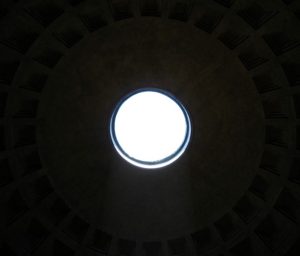
Next stop was a new sight for me, the Museo dell’ Ara Pacis. The building was opened in 2006 and was the first building constructed in the old city in almost 70 years. It’s design is modernist, controversial and the contains the Ara Pacis Augustae. This was the Emperor Augustus great monument to the (relative) peace Rome had brought to its empire. It’s a stunning marble altar with massive marble frescoes and is quite something to see close up. It’s a little out the way, but so worth the effort.
The altar is mostly complete, unfortunately about half the frescoes are scattered all over the world, and parts are in London, Washington and Paris. Sitting here I see the other side of the Elgin Marbles argument. A section of the frescoes are in the British Museum in London. The “Elgin Marbles” question is are they better off in the big museums of the world, or here as part of the original piece of work?
It’s a tough argument and I’ve mostly sided with the British Museum/Louvre up to now. They claim that important works should be shared with as many people as possible in a way that best preserves them. Perhaps it’s time to rethink that argument, or at least look at the other side.
For a long time it was about preservation, the Elgin Marbles is probably the most controversial of the items pilfered by the British Empire. For a long time the argument for them staying in England was that the Greeks had nowhere to put them and they would deteriorate in the pollution of Athens. Then the Greeks built the Acropolis Museum, and the argument changed to more people would see them in London that Greece. Reality is possession is 9/10 of the law with most of these things, so they stay in London.
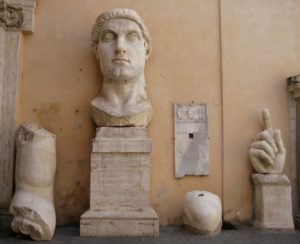
The Museo dell’ Ara Pacis is not that big and is very focused on the one item. It presents the history, the discovery, restoration and most importantly the meaning to Rome and Augustus in some depth. It gives it more meaning that just another fresco in the British Museum and perhaps should be reunited in a place like this that can do it justice. It’s an interesting argument.
Of course, I could not miss at least a wander across to St Peters Square. I did not have time to visit either St Peters Basilica of the Vatican museums; I’ll find time when I’m back in the spring.
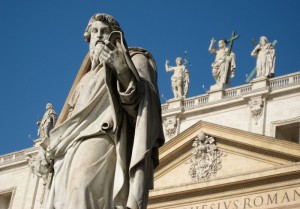
For dinner a couple of options were put forward, Hard Rock Café (for the picky eaters) or head out a find a place. No choice, as nice as I’m sure the HRC is, it’s not exactly Roman. We ended up in a little place off the Piazza Campo di Fiori. The food was exceptional, the wine wonderful and free flowing. I get it’s a stereotype, but the piazza really was full of Vespers buzzing around despite the cool weather.
Rome is a city best appreciated on foot, it’s not too big. I was lucky and got to wander for a few hours, while the big sights are great, it’s the details and little things that give a city character. It could be the graffiti on the South Bank in London, random patches of green in New York or another piece of the Roman Empire standing by the side of the road. Each place has a character that makes finding time to play tourist so much fun.
7 Comments
Beautiful description and pictures of the eternal city. Did you take the photos on your site? They are very good, shows a good eye. Really nice blog.
The Elgin Marbles were acquired legitimately, to the highest standard of the time and were most definitely not “pilfered by the British Empire”.
I’m not so sure about that. It’s very questionable if Thomas Bruce (then Earl, later Lord Elgin) had permission to be there, let alone remove them. I’ll admit “pilfer” may be a little strong, especially considering the standards of the time.
Having said that, I do think the correct place for the Elgin marbles is the British Museum. They are part of a comprehensive Greek collection seen and enjoyed by far more people than they would be in Athens.
There is no proof of permission to enter the Acropolis, let alone remove anything. By his own admission Lord Elgin “did not retain” the documents that gave him permission from the Ottomans to enter when a parliamentary committee asked for them.
Thanks,
Dave
[…] Dave's pointless mumblings… » A little time to my self… […]
The original documents you refer to were not for Elgin to keep. They would have been retained in Athens and then almost certainly returned to Istanbul, property of the Ottoman government.
Elgin could not have accessed the Acropolis without formal permission and he certainly paid handsomely for the privelege. There can be absolutely no doubt that he had the full permission and cooperation of the governing Ottomans to ship out multiple consignments of sculptures over a protracted period of two years.
Following the committee inquiry ownership passed to the British nation by act of parliament. The British Museum is bound to retain the marbles for the nation, in perpetuity, by law. To deny the legitimacy of that is to deny the legitimacy of British parliamentary democracy.
It’s a beautiful city to spend a few days in. I’d like to do more business travel like that, how come you go to Rome and I get to see the highlights of Kansas? I wonder who hands out the assignments… Oh that would be you!
Dan
“Rome is a love that takes off masks that we fear we cannot live without and know we cannot live within.”